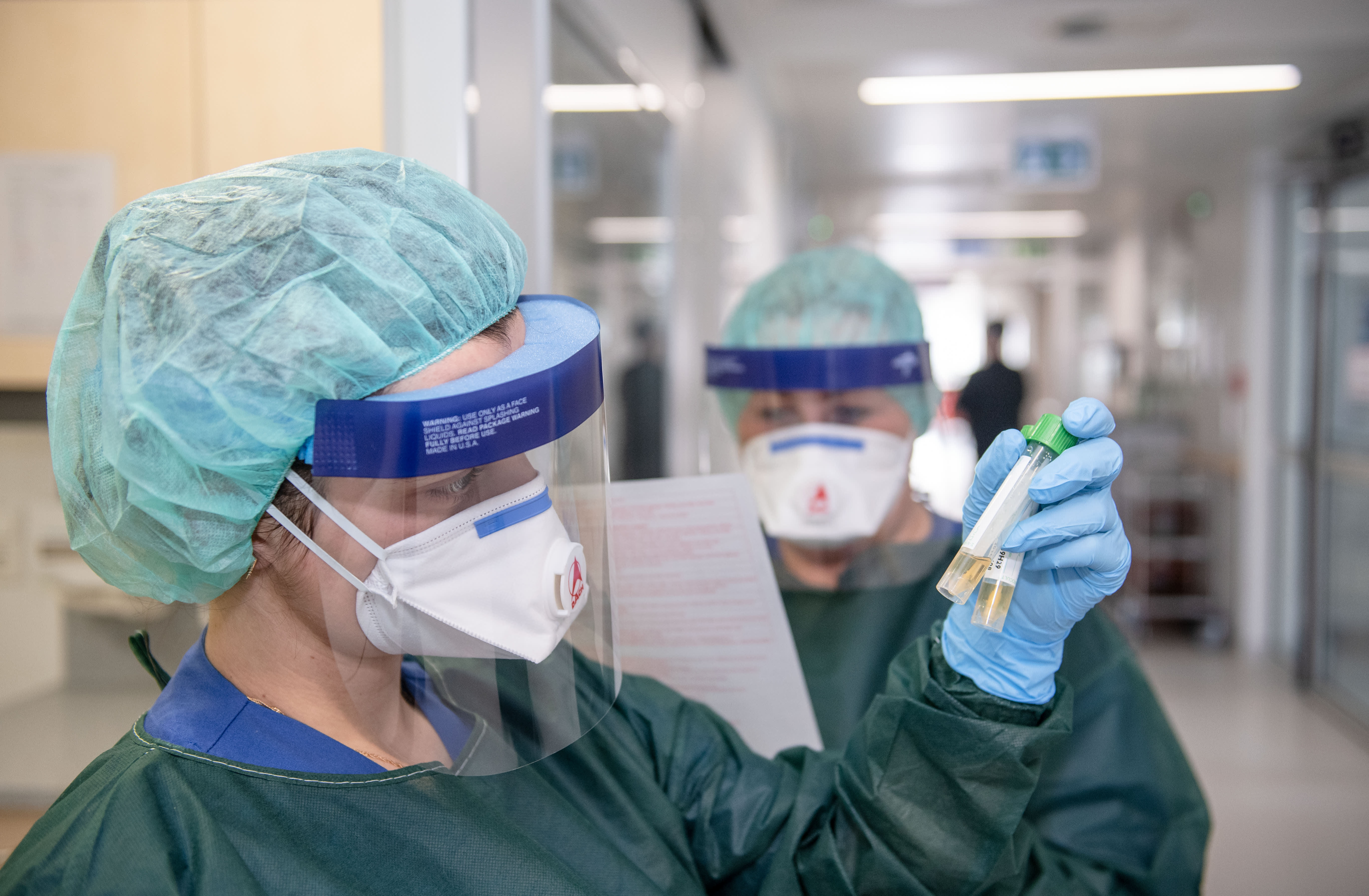
This is a live blog. Please check back for updates.
All times below are in Eastern time.
Total cases: More than 24,000 as of Wednesday morning.
Total deaths: At least 490 worldwide as of Wednesday morning.
10:03 am: WHO schedules media update
The World Health Organization scheduled a media briefing at 10 a.m. ET as the number of cases rises above 24,000 across the globe, most of them contained in China. Watch the live press conference here.
9:57 am: Adidas getting hit by outbreak
Adidas confirmed that it has closed a significant number of stores in China because of the coronavirus. The company is currently operating less than 500 stores in China, 4% of the 12,000 locations it has there, including franchise stores. In a statement to CNBC, the company said it is too early to assess the magnitude of the virus' impact. - Miller
9:35 am: Coronavirus infects six-month-old baby in Singapore
Singapore's health ministry confirmed four more coronavirus cases, including a six-month-old baby. Both parents of the infant, a Singapore citizen, have also been infected, the ministry said. On Tuesday, Singapore reported its first cases of citizens and residents who had contracted the virus without recent travel to China, where the outbreak first surfaced in late December. - Reuters
9:30 am: Retailer Capri Holdings takes a hit
Michael Kors owner Capri Holdings said it has taken a $100 million hit to revenue because of the coronavirus. Capri closed 150 of its 225 stores in mainland China and has seen a significantly drop in foot traffic. The company warned that travel restrictions on visitors from China could also put pressure on sales in other regions. "This is going to be a very tough period for luxury brands," said Ben Cavender, managing director at China Market Research Group in Shanghai. "There is going to be a negative long-term effect as well, as many corporate offices are shut down or barely functioning and this is a key time period for planning future seasons." - Miller
9:05 am: Bill & Melinda Gates Foundation commits $100 million
The Bill & Melinda Gates Foundation said it will spend up to $100 million to improve detection, isolation and treatment efforts for the new coronavirus. It also hopes to accelerate the development of vaccines, drugs and diagnostics. "Multilateral organizations, national governments, the private sector and philanthropies must work together to slow the pace of the outbreak, help countries protect their most vulnerable citizens and accelerate the development of the tools to bring this epidemic under control," Gates Foundation CEO Mark Suzman said. - Feuer
9 am: Princess Cruises says one person from the US among 10 diagnosed on ship
Princess Cruises confirmed to CNBC that one of the people in its ship near Japan who tested positive for the coronavirus is from the United States. Of the 9 others, there are two passengers from Australia, three from Japan and three from Hong Kong and one Filipino crew member. The 3,700 people on the ship will remain in quarantine for 14 days in total. - Feuer
8 am: ECB chief says outbreak 'adds a new layer of uncertainty' to global growth
The president of the European Central Bank expressed concern that China's coronavirus outbreak is fueling global economic uncertainty. "The short-term uncertainties are mainly related to global risks — trade, geopolitical and now the outbreak of the coronavirus and its potential effect on global growth," Christine Lagarde said during a speech in Paris, according to Reuters. "While the threat of a trade war between the United States and China appears to have receded, the coronavirus adds a new layer of uncertainty."
7:25 am: WHO says there are 'no known' effective drug treatments against coronavirus
The World Health Organization played down reports of a drug breakthrough against the coronavirus. "There are no known effective therapeutics against this 2019-nCoV and WHO recommends enrollment into a randomized controlled trial to test efficacy and safety," WHO said Wednesday. "A master global clinical trial protocol for research and prioritization of therapeutics is ongoing at the WHO." Earlier in the day, Reuters said a Chinese TV media outlet had reported that a research team at Zhejiang University had found an effective drug to treat people with the new coronavirus. The news agency, citing traders, suggested this was a reason for the move higher in stocks. Separately, Sky News reported Wednesday that a scientist from Imperial College London had made a significant breakthrough in the race to develop a vaccine. CNBC has not been able to verify the media reports.
6:20 am: China's Xi says the country must crack down on coronavirus misinformation
https://news.google.com/__i/rss/rd/articles/CBMiPWh0dHBzOi8vd3d3LmNuYmMuY29tLzIwMjAvMDIvMDUvY29yb25hdmlydXMtbGl2ZS11cGRhdGVzLmh0bWzSAUFodHRwczovL3d3dy5jbmJjLmNvbS9hbXAvMjAyMC8wMi8wNS9jb3JvbmF2aXJ1cy1saXZlLXVwZGF0ZXMuaHRtbA?oc=5
2020-02-05 13:34:00Z
52780579291157




